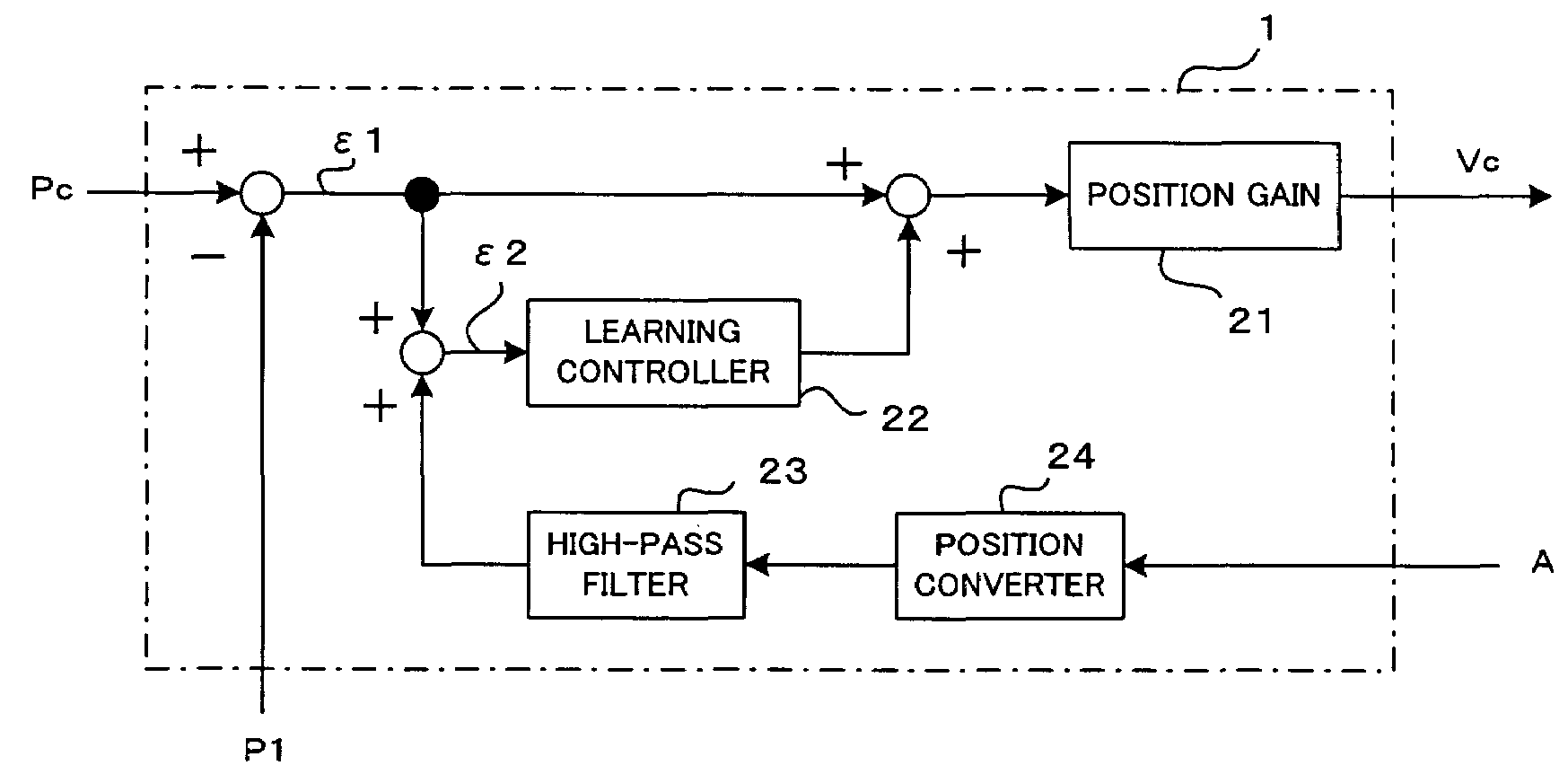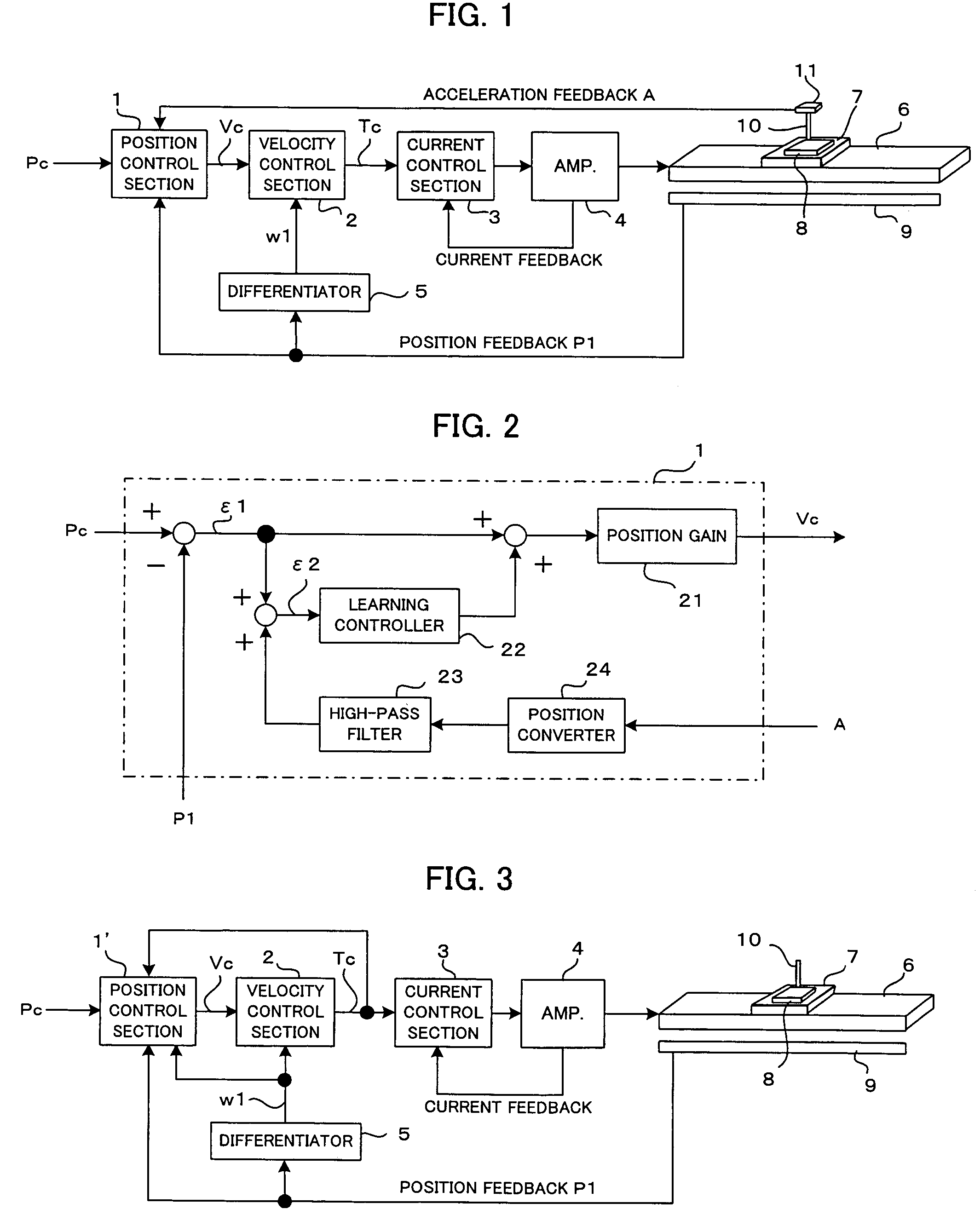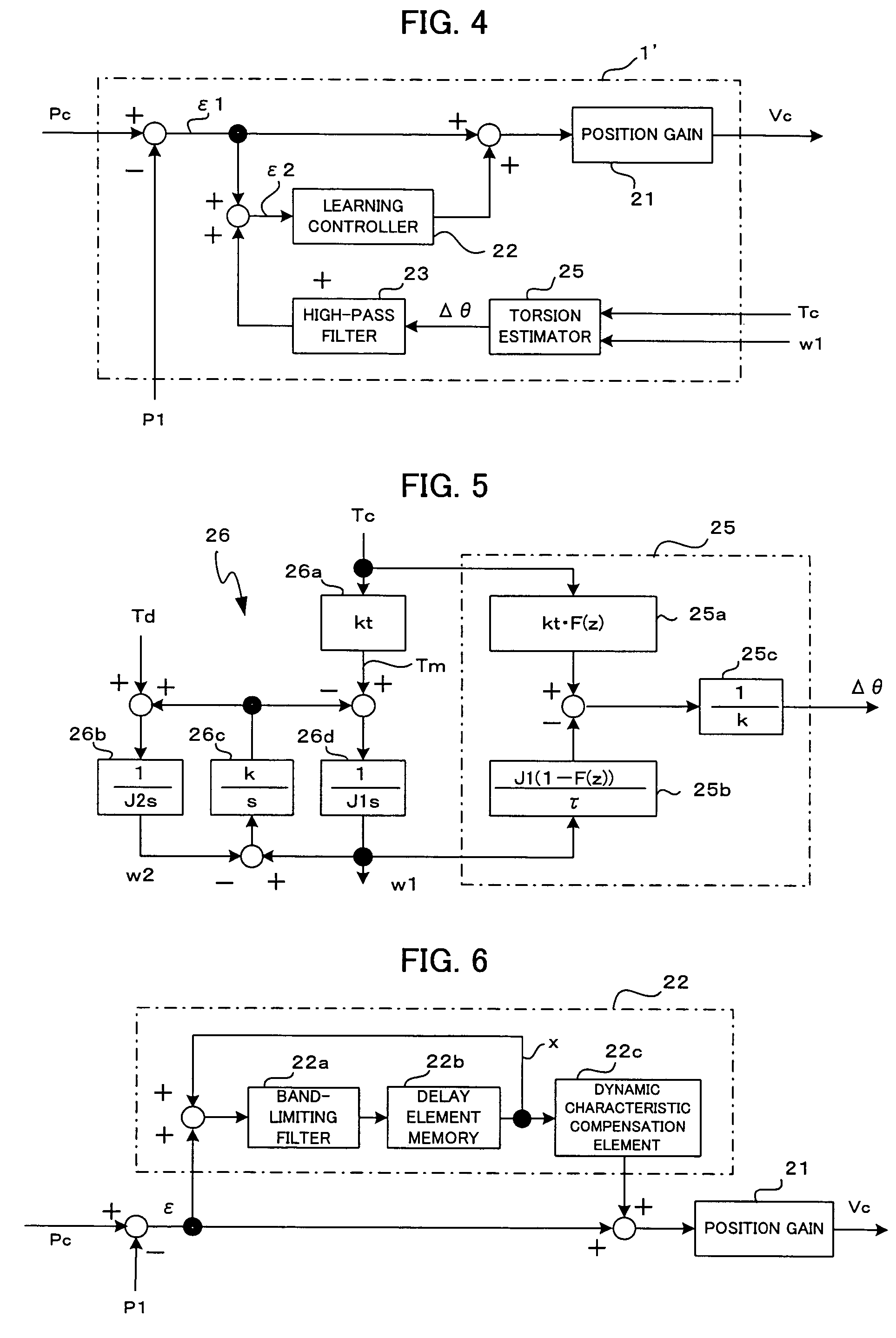Controller for machine effecting end
a technology of controlling end and machine, which is applied in the direction of electric programme control, program control, instruments, etc., can solve the problems of inability to neglect, the motion of the driven element with respect to the machine effecting end does not always agree with the command motion, and the driven element is liable to vibra
- Summary
- Abstract
- Description
- Claims
- Application Information
AI Technical Summary
Benefits of technology
Problems solved by technology
Method used
Image
Examples
first embodiment
[0034] in each position loop control interval, the second position deviation ε2 is added to the correction value x stored in the immediately preceding position loop interval of the pattern repeated at predetermined intervals, and the sum obtained is filtered through the band-limiting filter 22a for stabilizing the controlled system and then stored in the delay element memory 22b as the correction value x of the present position loop control interval. Also, the correction value x of the immediately preceding position loop interval of the repeated pattern, stored in the delay element memory 22b, is compensated for a phase lag and gain drop of the controlled system by the dynamic characteristic compensation element 22c, and the result is output from the learning controller 22. In the position control section 1, the first position deviation ε1 and the output of the learning controller 22 are added together, and the sum obtained is multiplied by the position gain 21, the result being out...
second embodiment
[0036]FIG. 3 is a block diagram showing a principal part of the present invention.
[0037]In the second embodiment, the acceleration sensor is not used. Instead, the position of the machine effecting end is predicted by using a machine model and is controlled so as to coincide with the commanded position. First, the principle of operation of the second embodiment will be explained.
[0038]Where the relationship of the position detector and the machine effecting end is represented as a two-inertia system with the friction term neglected, the following equations (1) and (2) hold with respect to the motor side and the machine side, respectively:
[0039]J1·w1·s=Tm-k(w1-w2)s(1)J2·w2·s=k(w1-w2)s+Td(2)
[0040]In the above equations (1) and (2), J1 is the motor inertia, J2 is the machine inertia, w1 is the motor velocity, w2 is the velocity of the machine effecting end, k is the spring constant of the machine, Tm is the commanded torque, Td is the disturbance torque, and s is the ...
PUM
 Login to View More
Login to View More Abstract
Description
Claims
Application Information
 Login to View More
Login to View More - R&D
- Intellectual Property
- Life Sciences
- Materials
- Tech Scout
- Unparalleled Data Quality
- Higher Quality Content
- 60% Fewer Hallucinations
Browse by: Latest US Patents, China's latest patents, Technical Efficacy Thesaurus, Application Domain, Technology Topic, Popular Technical Reports.
© 2025 PatSnap. All rights reserved.Legal|Privacy policy|Modern Slavery Act Transparency Statement|Sitemap|About US| Contact US: help@patsnap.com



